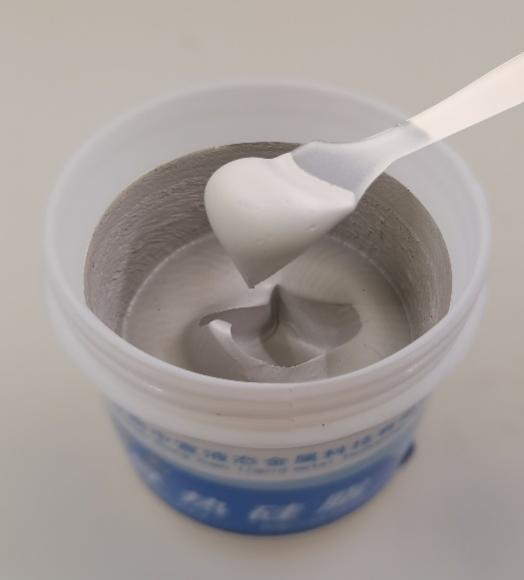abstract
Thermal conductive adhesiveAs a new type of thermal conductive material, it has good thermal conductivity and adhesive properties, and is gradually being widely used in fields such as electronics, machinery, and automobiles. This article reviews the research progress on the chemical structure, preparation methods, thermal conductivity mechanism, performance testing, and application fields of thermal conductive adhesives, aiming to provide reference for the research and application of thermal conductive adhesives.
introduction
The traditional heat dissipation method relies on the thermal conductivity of metal materials, but due to the high manufacturing cost, heavy weight, and limited shape of metal materials, it has gradually led to research on other materials. Thermal conductive adhesive, as a new type of material, has become one of the research hotspots in recent years by combining the advantages of adhesive performance and thermal conductivity. The research and application of thermal conductive adhesive can not only improve heat dissipation efficiency, but also make equipment smaller, lighter, and more flexible in shape, with a wide range of application prospects. This article will provide a systematic review of the research progress on thermal conductive adhesives.

Chemical Structure of Thermal Conductive Adhesive
The chemical structure of thermal conductive adhesive is complex and generally consists of two parts: filler and matrix. Fillers are generally selected from materials with good thermal conductivity, such as alumina, carbon fiber, etc., to improve thermal conductivity; Organic materials with poor thermal conductivity but good adhesion properties, such as epoxy resin, polyurethane, etc., are generally selected as the substrate for bonding objects. In addition, some auxiliary agents such as crosslinking agents, hardening agents, thickening agents, etc. can be added to adjust the performance of the adhesive.
Preparation method of thermal conductive adhesive
There are many methods to prepare thermal conductive adhesive, such as sealing, sol gel, mechanical mixing, reactive extrusion, etc. The sealing method is to mix the filling material and the substrate in a certain proportion, and then perform heating, stirring, compaction and other processes in a closed state to obtain a material with thermal conductivity and adhesion
Thermal conductive adhesiveThe sol gel method is to disperse the filler material in the solution, and then obtain the gel with thermal conductivity through the gel method, and then mix with the matrix to obtain the thermal conductive adhesive. The mechanical mixing method is to directly mechanically mix the filling material and the substrate to obtain a thermal conductive adhesive with thermal conductivity and adhesion. The reactive extrusion method involves reacting and mixing the filling material and substrate in an extruder, and then extruding a thermally conductive adhesive with both thermal conductivity and adhesive properties.
Thermal conduction mechanism of thermal conductive adhesive
The thermal conductivity mechanism of thermal conductive adhesive is mainly determined by two factors: the thermal conductivity of the filling material and the structure of the thermal conductive adhesive. The thermal conductivity of filling materials is mainly related to their type, shape, particle size, etc. The structure of thermal conductive adhesive mainly includes factors such as filling rate, filling depth, filling uniformity, and interface morphology. Generally speaking, the thermal conductivity of thermal conductive adhesive increases with the increase of filling rate, but when the filling rate reaches a certain value, the thermal conductivity will decrease due to the constraint of heat transfer between filling particles. At the same time, the interface morphology between the filling material and the matrix can also affect the thermal conductivity. A rough interface can lead to an increase in interfacial thermal resistance, thereby reducing the thermal conductivity.





